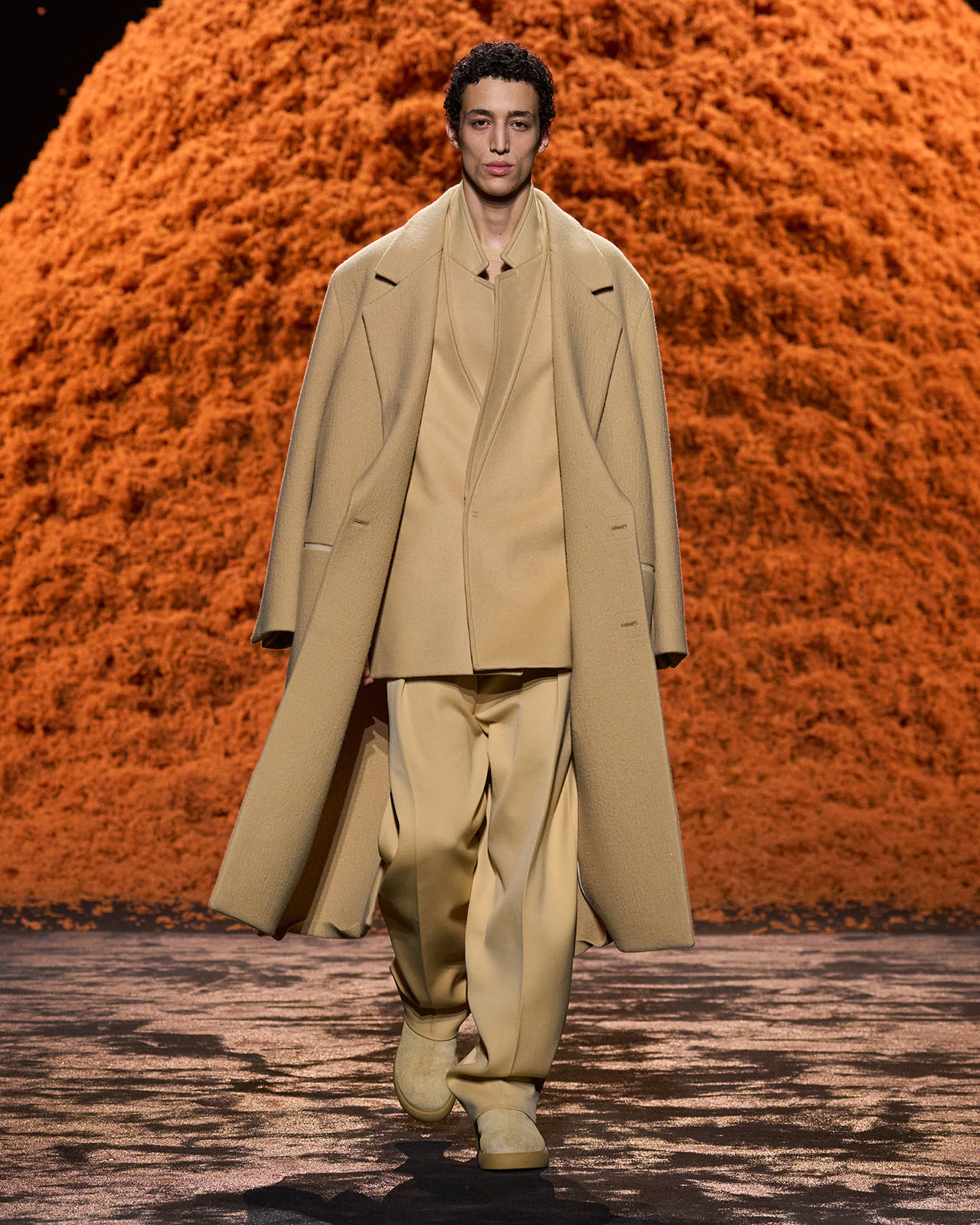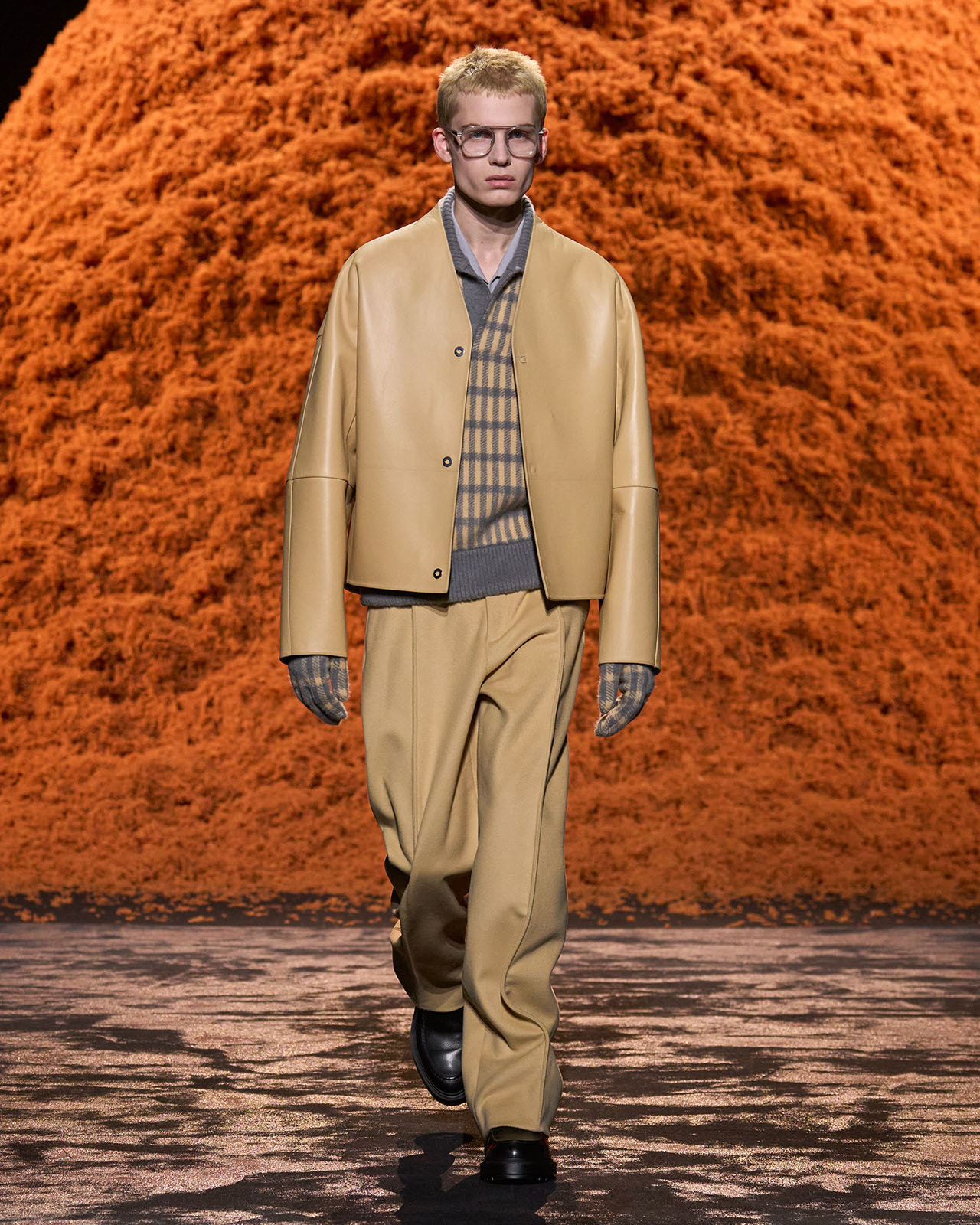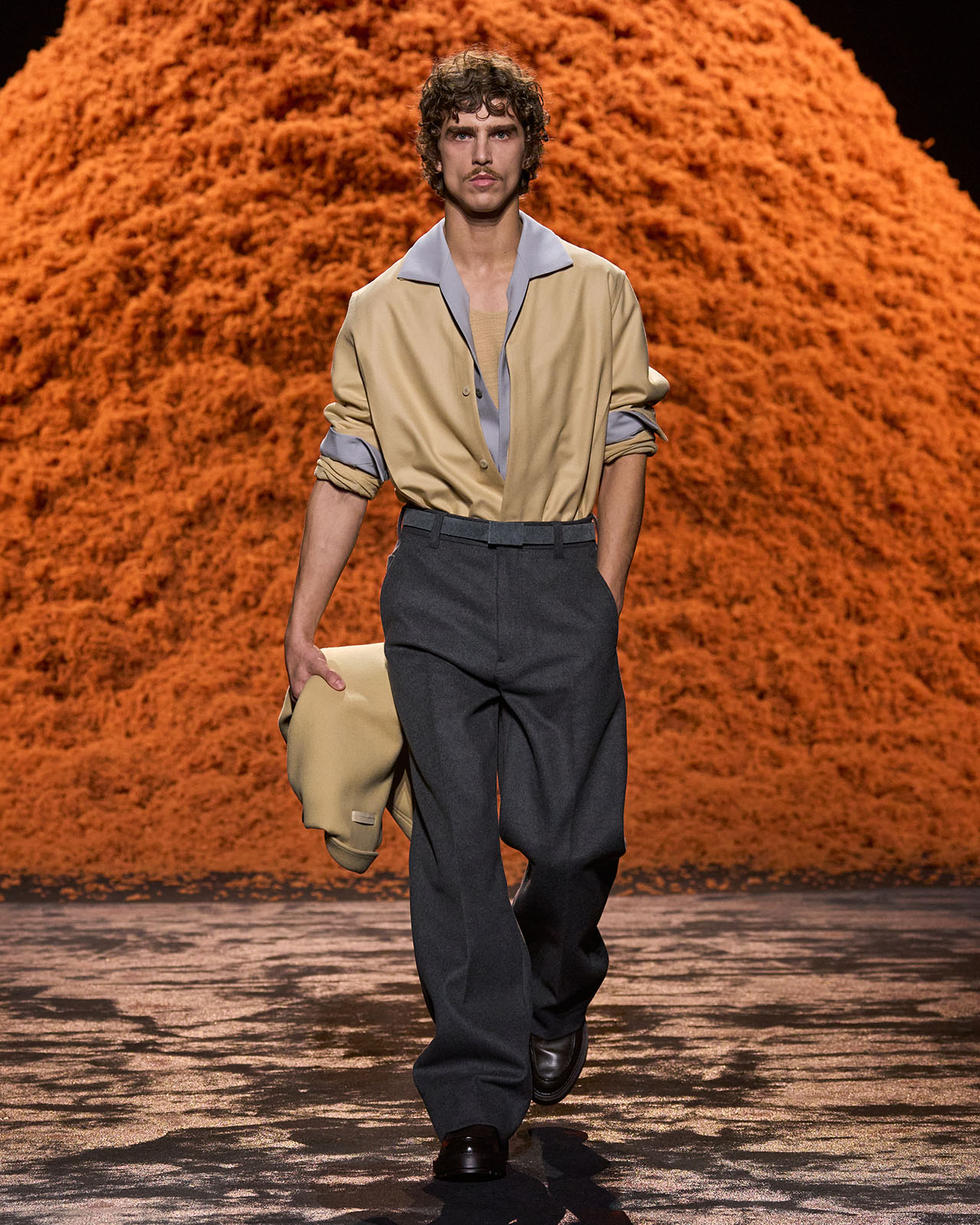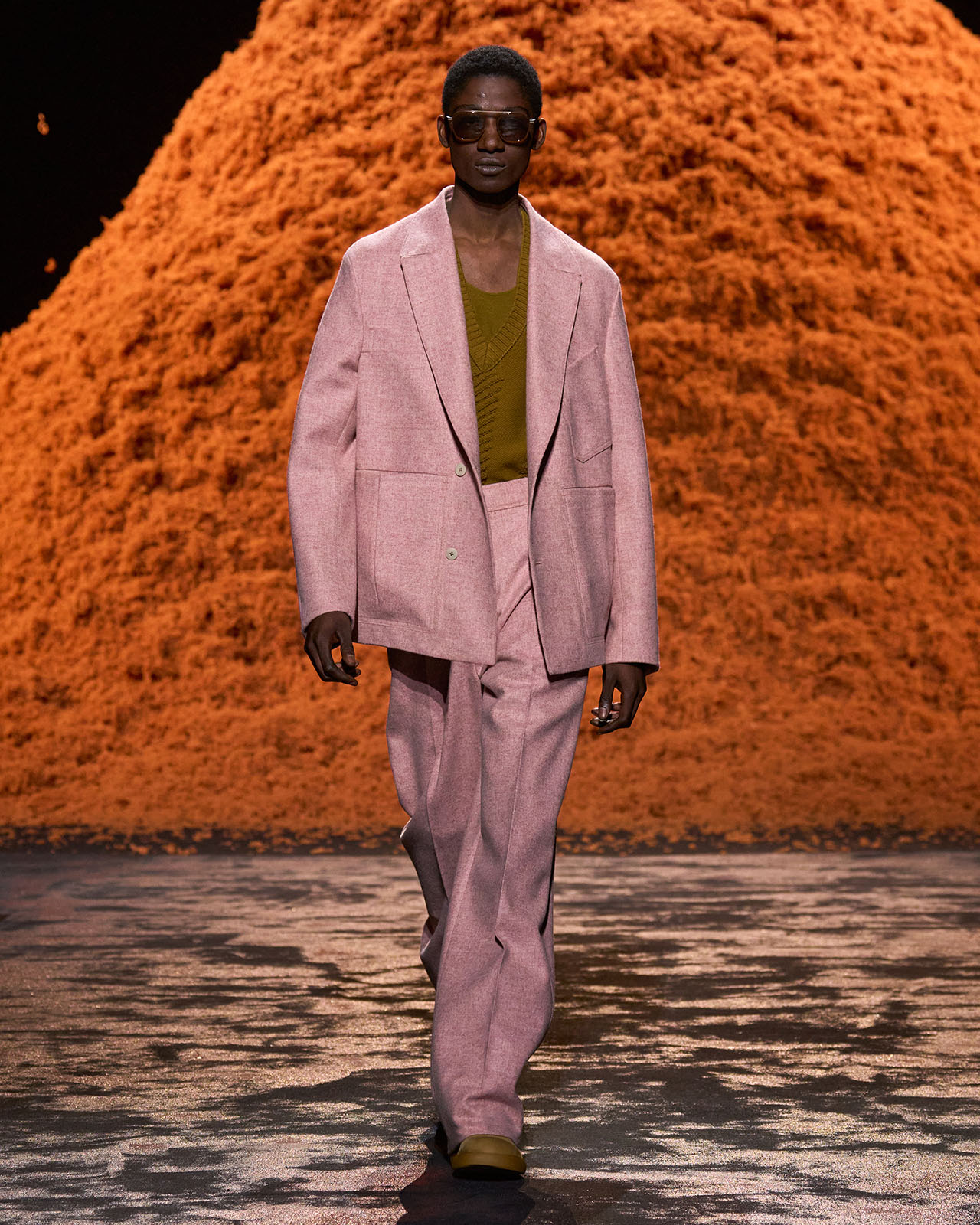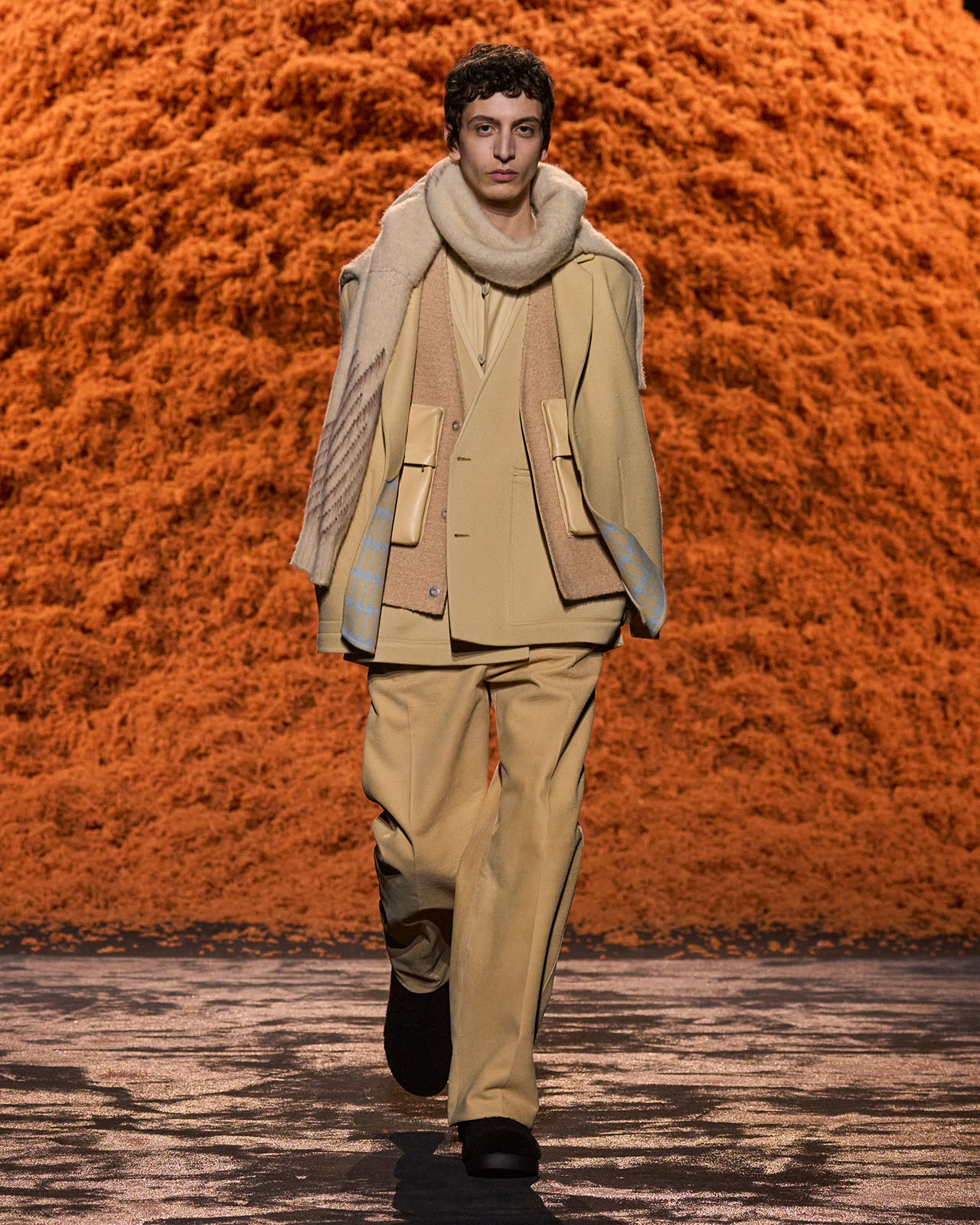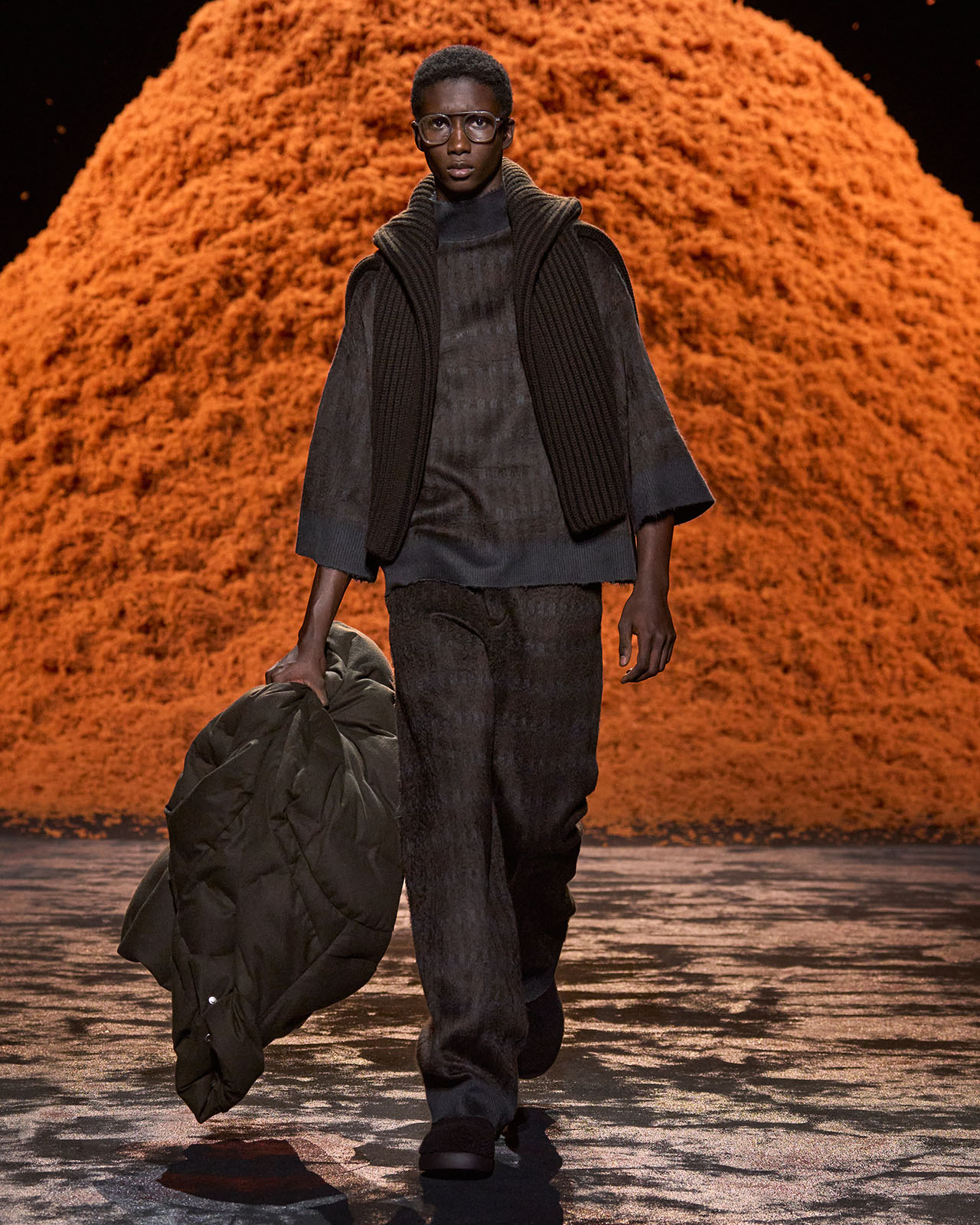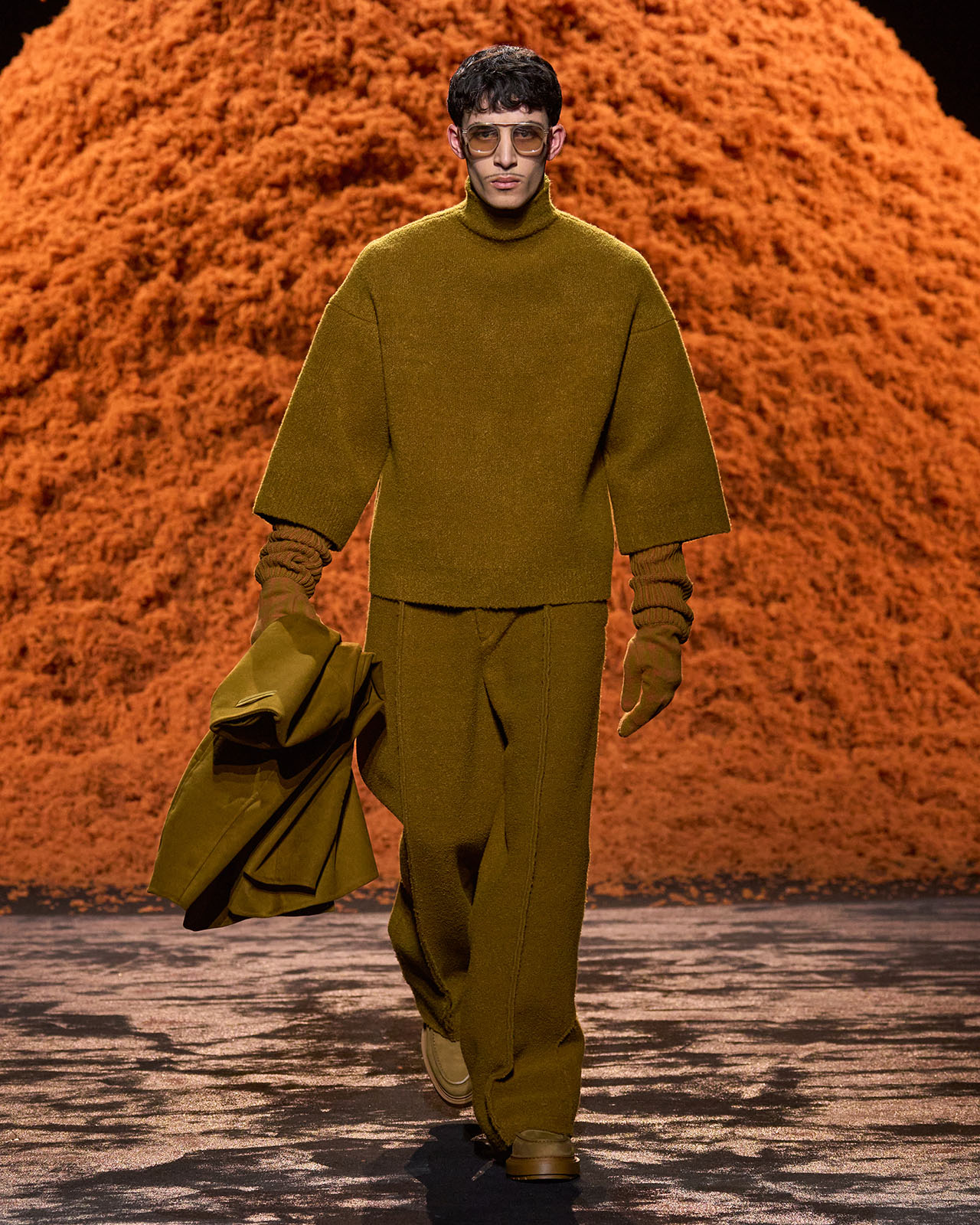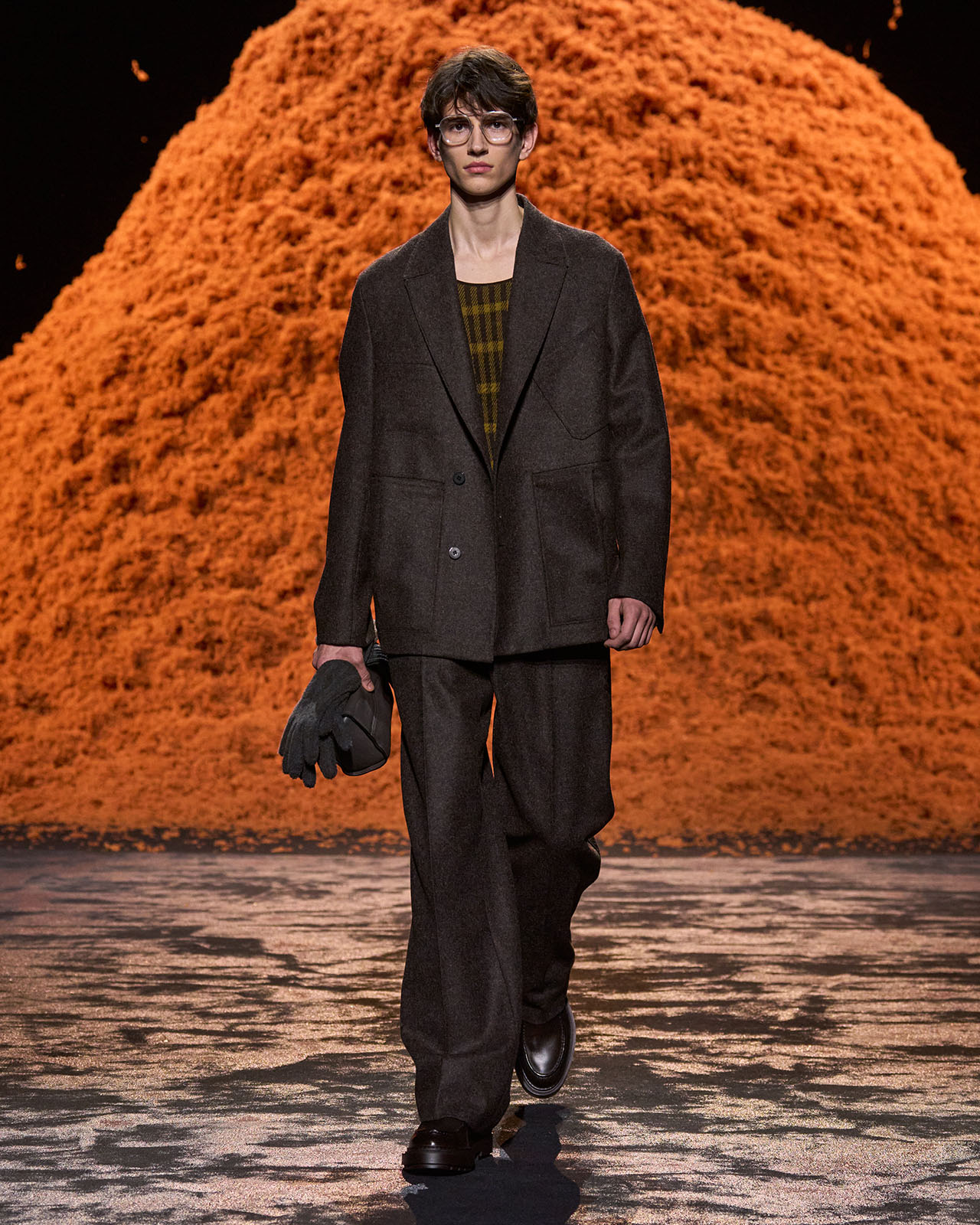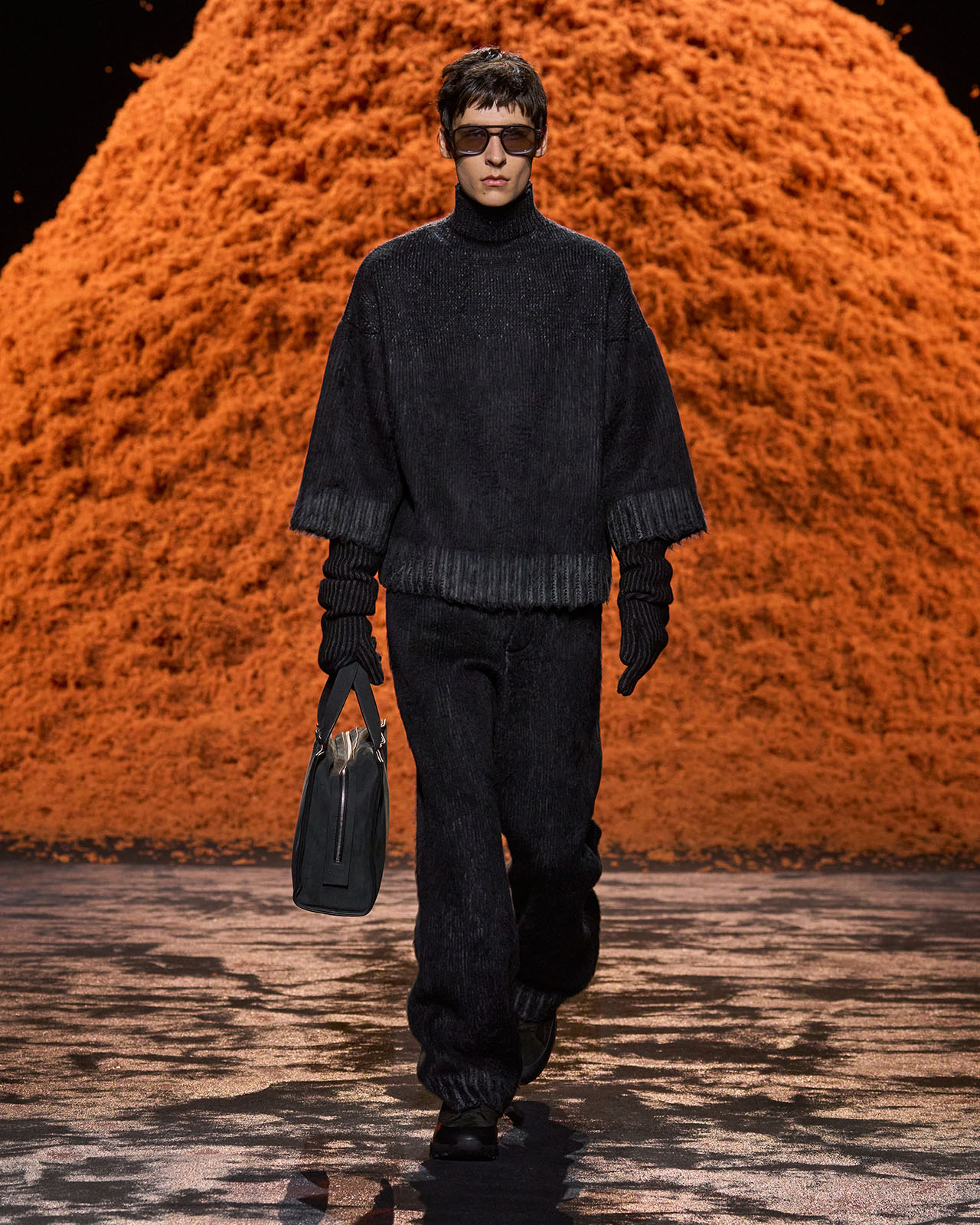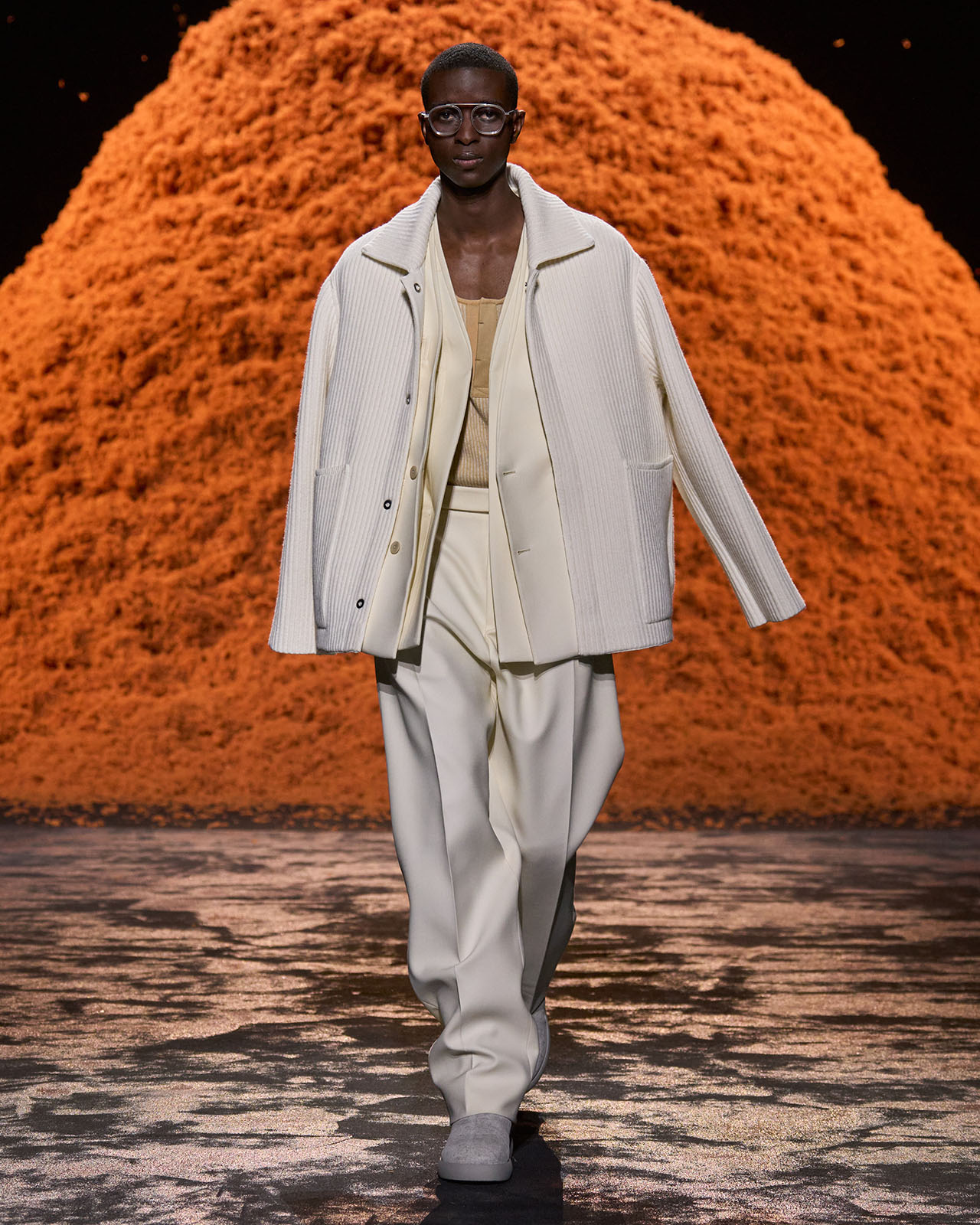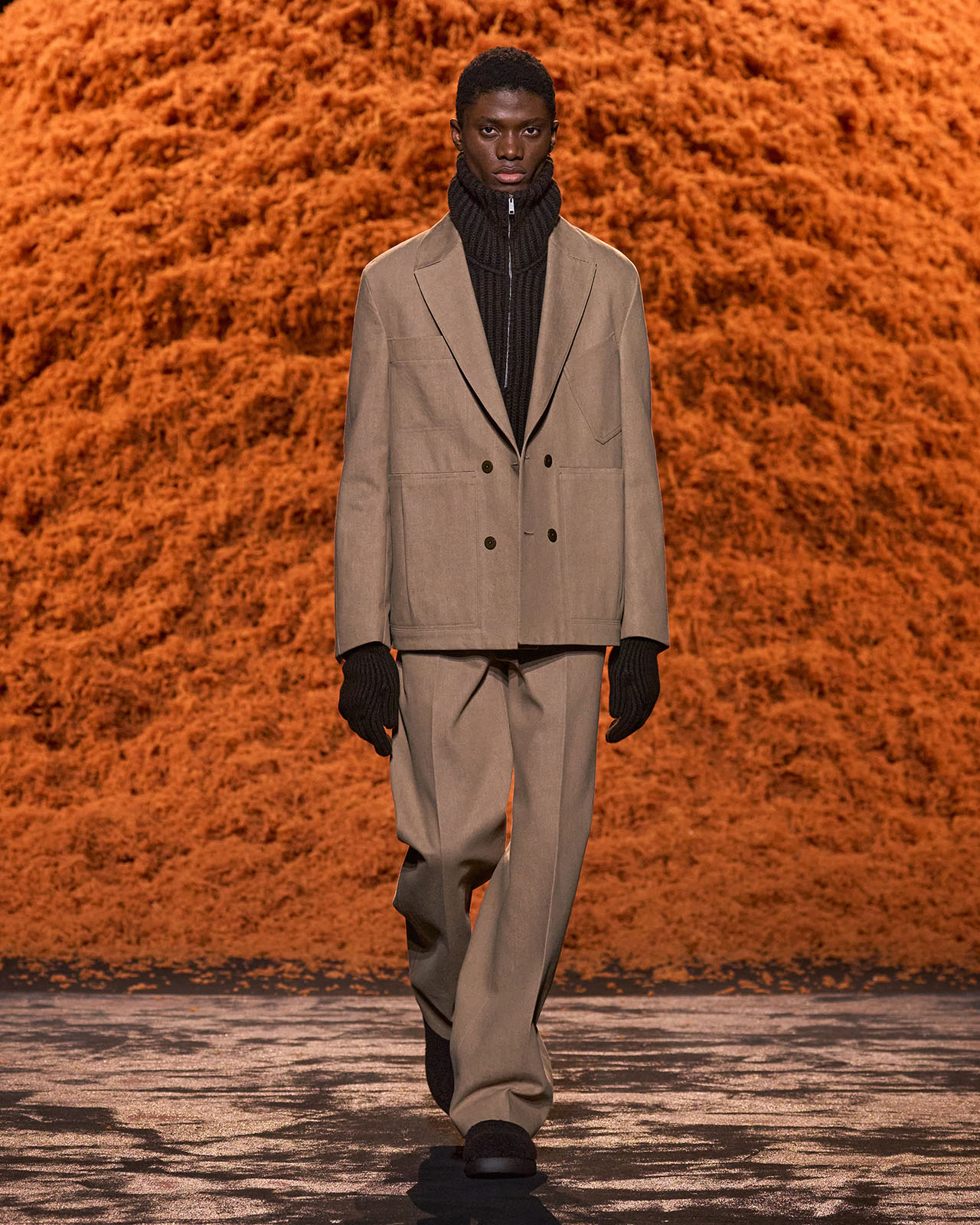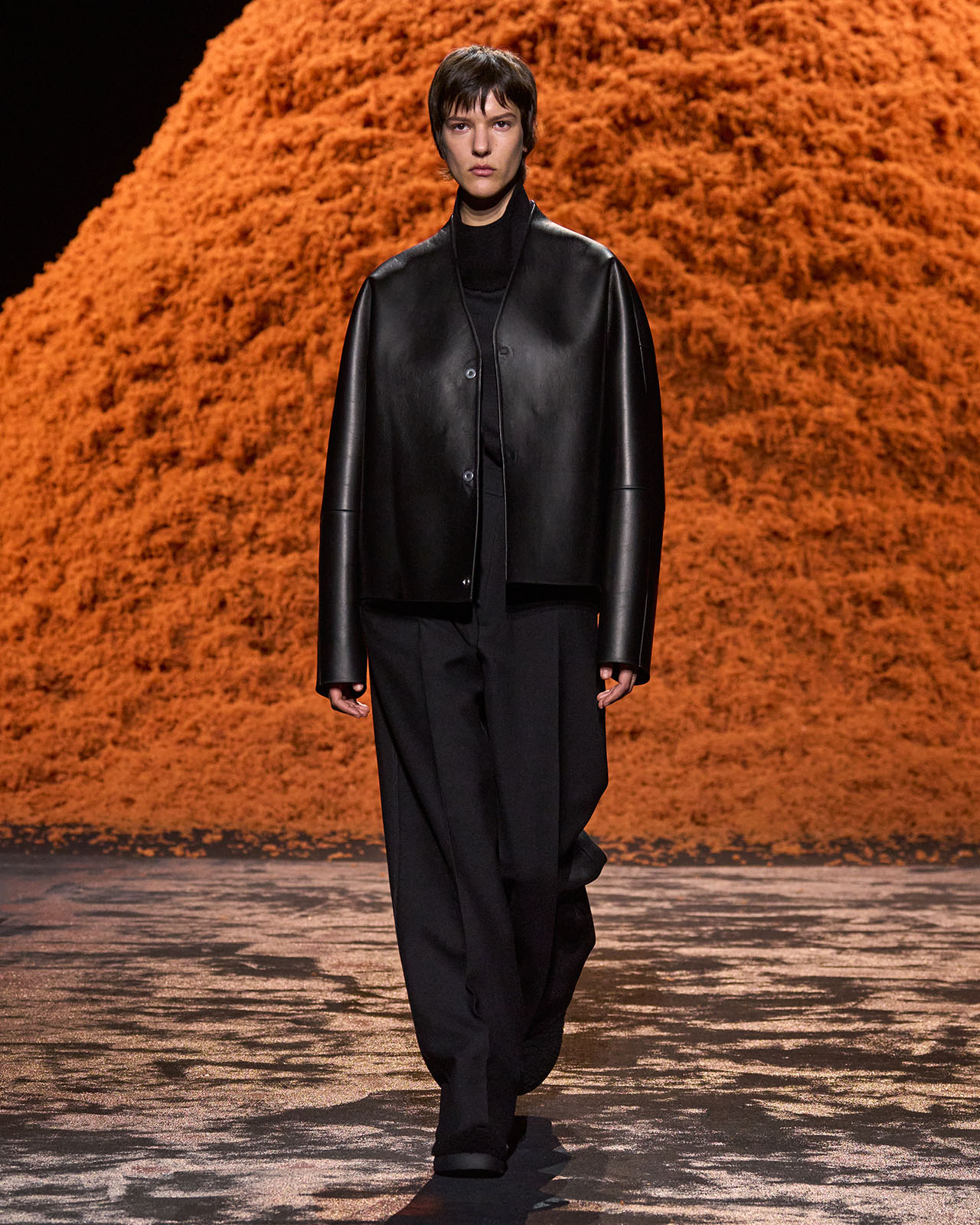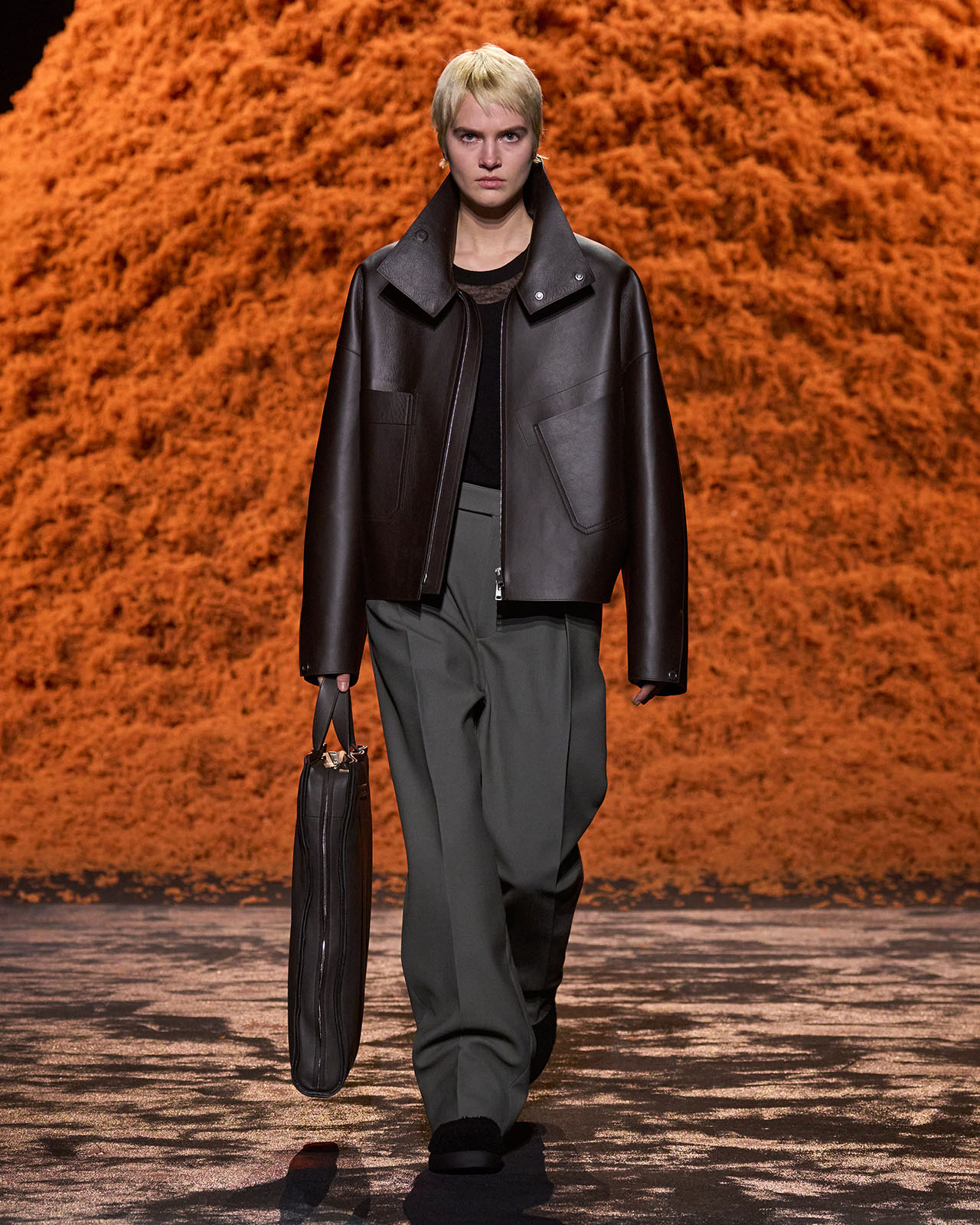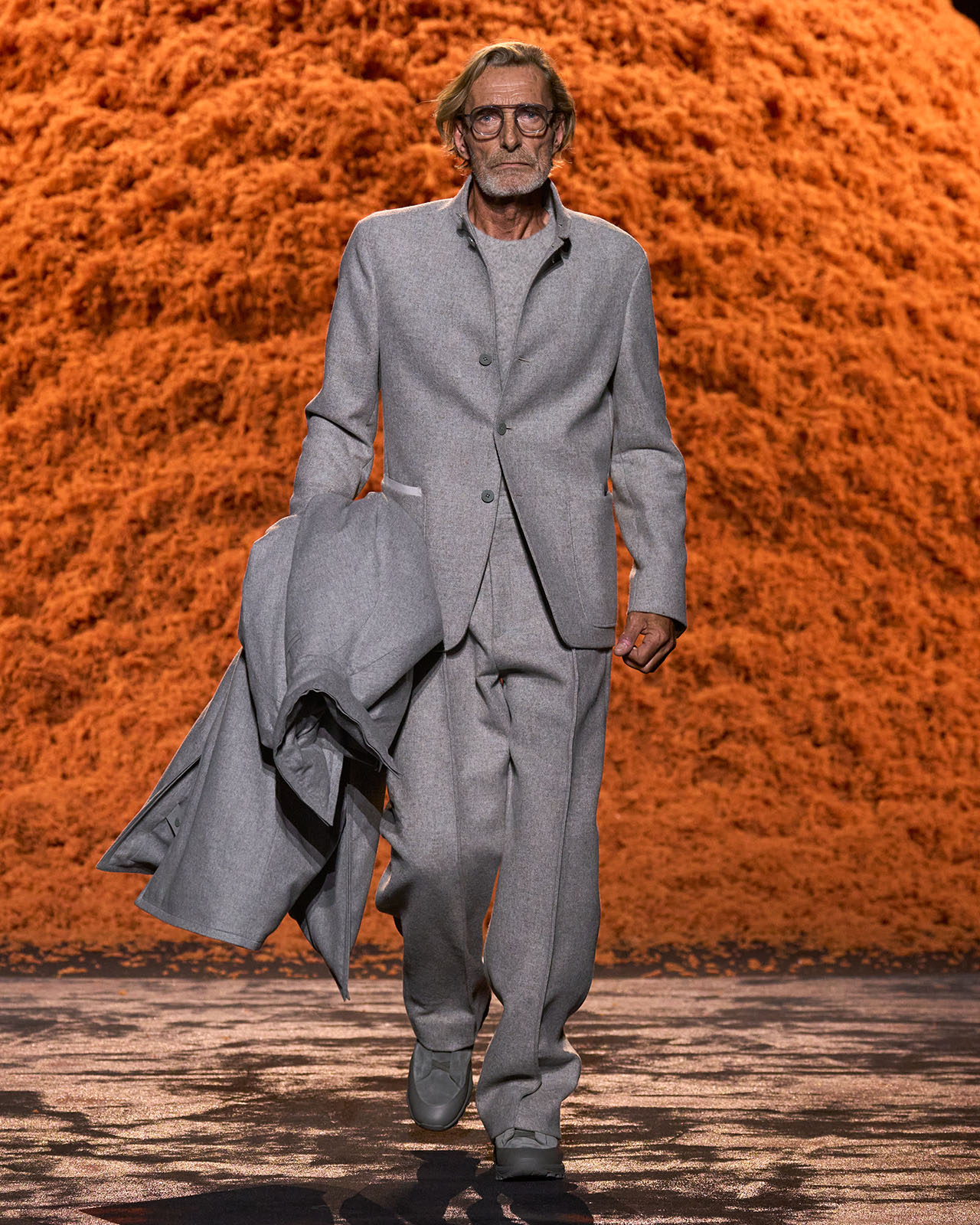News feed
Alessandro Sartori may carry the title artistic director for Zegna but at heart the Italian is much a scientist as he is a designer. Indeed, even the CEO of family-owned Zegna, Gildo, has described Sartori’s runways as an ideas lab where fabrication, colours, cut and fit are continually experimented with and inform the brand’s broader messaging.
For their Winter 2024 show, the “lab” was in full effect. A mountain camel cashmere grew as tufts of the material gently fell from above, feeding the pile. This was, according to notes, macrocosmic replica of the waste-collection and recycling of process of fibres within the Zegna mill.
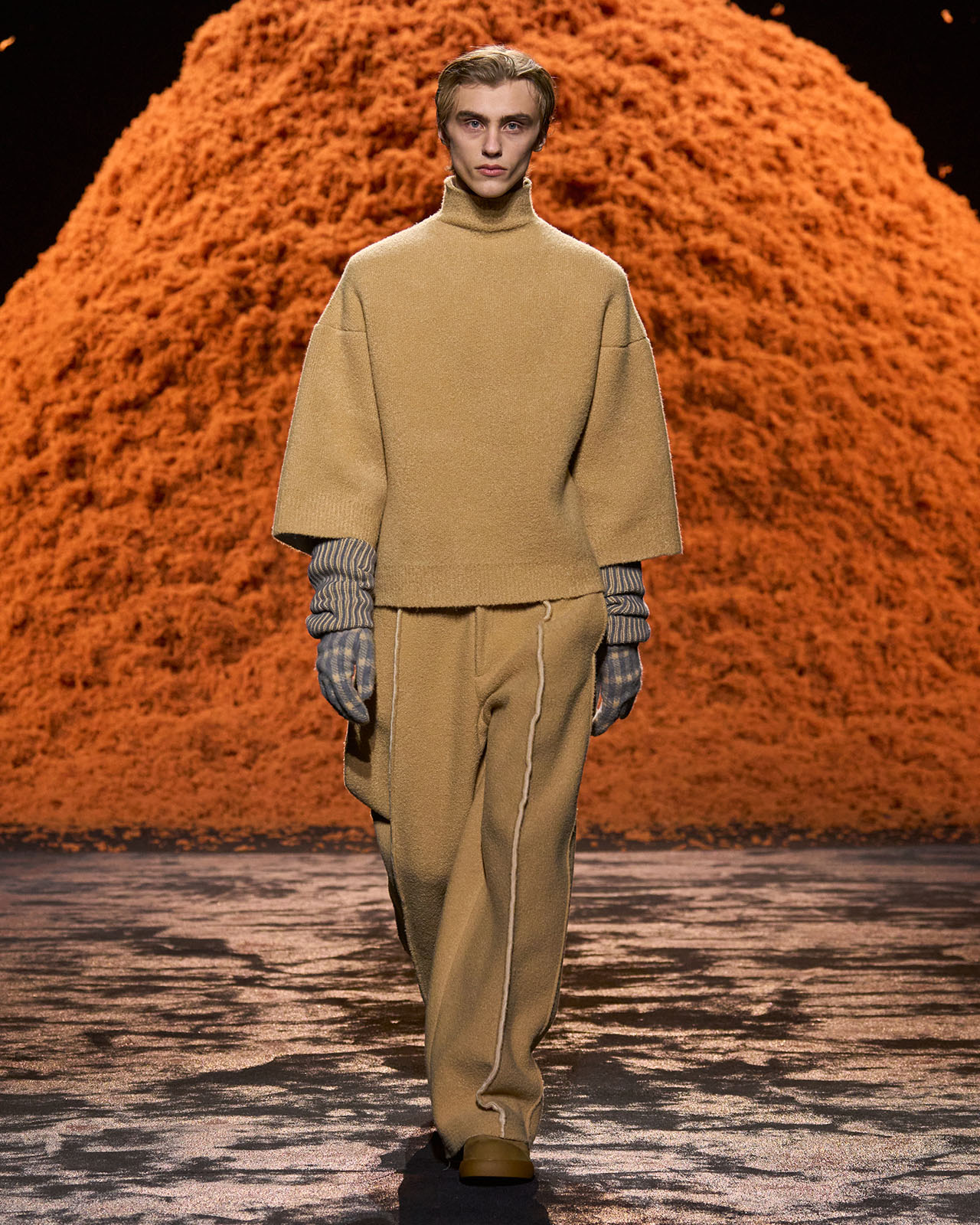
In the hands of Sartori, fibres are the alchemy through which he forges his clothing and the main ingredient for winter is cashmere, its versatility enhanced through various construction techniques. The collection features a variety of textures that enhance its tactile appeal, including a mix of shetland and cashmere, luxurious pure cashmere beaver, various treatments of panno fabric like washed, intarsia, and 3D workwear styles, plush cashmere-backed plongè leather, cozy cashmere terry, and classic raw denim. Complementing these materials is a distinctive elongated damier pattern, adding rhythmic visual interest to the fabric surfaces.
Voluminous coats, sonic welded duvets are highlights from a lineup that also includes double-collared blazers, collarless anoraks, and the new “Il Conte” jacket was paired with spacious trousers that flowed like water on the model.

At its heart, Zegna delivered a showcase of how experimental the essentials of menswear could be: knitted tops and bottoms, overshirts, boxy jackets with functional pockets, and ribbed, padded jumpers as outerwear. Accessories like long ribbed gloves, bridgeless glasses, round-toed boots, the Triple Stitch “Monte,” and neatly designed handbags and satchels complete the ensembles. Layering is key, with a color palette of whites, greys, blacks, browns, and bursts of pink.
It’s been said before, and it should be repeated often, that there’s unlikely to be anyone else working in menswear with Sartori’s technical knowledge on fabric and fibre. This shows with every collection, which continually renews its own codes and systems, stripped back to four essential ingredients that make up the male (and female, as the models prove) wardrobe: tops, bottoms, underpinnings and accessories. These, Sartori believes, provide an open ended system with an endless capacity for sartorial rotation.
